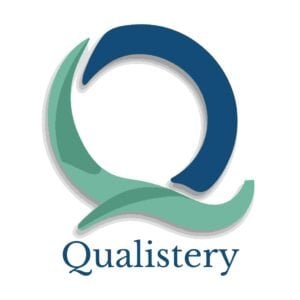Join Yan Kugel and Dr. Paresh Tank as they shed lights on the changing trends of GMP audits and what roads must quality teams pursue. Dr. Tank, the CEO of PHARMALANE UK, covered topics like tougher inspector expectations, the rise of unannounced inspections, smarter supplier oversight, risks tied to nearshoring, and clear steps that reduce audit findings.
Why surprise inspections expose the truth
Regulators are moving away from predictable, scheduled visits toward more surprise inspections. The US FDA has already increased the frequency of unannounced visits, and other agencies are watching closely. Dr. Tank pointed out that when companies get long notice, they often run a concentrated cleanup that masks systemic problems such as poor documentation habits, temporary changes to environmental controls, or staged staff behaviour. Those short-term fixes can pass an inspection but leave product quality at risk on regular production days. Unannounced inspections force organisations to show consistent everyday compliance. They test whether procedures are truly embedded, whether records reflect real work, and whether staff can follow systems when they are not under the glare of advance notice. Firms that rely on a “prepare for inspection” sprint will be exposed. The practical implication is clear: inspection readiness must be continuous and verifiable, not episodic.
How mock inspections become lasting fixes
PHARMALANE’s approach to mock inspections is built around realism and follow-through. Mock teams include former regulators and technical specialists who know how actual inspectors probe data integrity, contamination controls, and test lab robustness. The mock audit replicates not just checklists but the pressure, lines of questioning, and document requests that happen in real life. Importantly, findings are turned into tracked remediation plans with clear owners, realistic timelines and verification steps that prove fixes are sustainable. This is how short-term corrections are converted into permanent controls. For many clients, the difference lies in that post-audit discipline. Sites that treat the mock report as a cosmetic to close off quickly continue to fail. Sites that use it as the basis for root-cause work and control redesign cut repeat observations substantially.
When expansion brings hidden risk
Supply chain diversification helps reduce single-source exposure and can lower costs. But moving production or sourcing to new geographies — India, China, Mexico, Brazil, Vietnam, Thailand and others — brings operational blind spots. Dr. Tank described common failures: commercial teams signing off on suppliers without deep quality checks, initiation audits that are rushed, and a false sense of security from high-level credentials or certificates. In unfamiliar regions, cultural differences, local regulatory norms and variable contractor practices can add complexity. Even when a facility looks modern and well-resourced, the micro-practices on the shop floor and in the lab can be weak. Those weaknesses surface when a regulator drills down into batch records, deviation handling, change control, and data generation practices. The risk is not just product quality; it is reputational and regulatory exposure for the marketing authorisation holder when a supplier falters.
How to qualify suppliers so reputation is safe
Start supplier qualification with rigorous, cross-functional due diligence that covers quality systems, commercial risk, capacity, and contingency planning. An initiation audit must be planned with the right subject-matter experts and sufficient time to examine lab practices, manufacturing flows, cleaning validation, environmental monitoring, and data management. Where justified by risk, a local quality liaison or resident auditor should provide continuous oversight and immediate escalation if issues appear. Post-qualification, use a risk-based schedule of re-audits keyed to product criticality, past findings, and changes at the supplier. Don’t treat audits as a tick-box. Use them to verify that the supplier follows written procedures day to day. If a supplier is manufacturing your product, your name is on the line. That changes the conversation from cost-first to reputation-first.
Freeing senior staff by outsourcing the routine
Quality teams frequently stretch their best people across too many tasks. Senior quality staff often end up traveling for supplier audits while critical work at the home site goes unattended. Dr. Tank recommends a pragmatic split: outsource field audits, routine documentation review, and lower-risk mock inspections to trusted external specialists so internal experts can prioritize investigations, regulatory interactions, batch release decisions and continuous improvement projects. Outsourcing works when governance remains tight. The organisation must still hold the supplier relationship and own corrective actions and approvals. Done right, outsourcing increases the speed and coverage of supplier oversight while reserving internal talent for the highest-value, highest-risk tasks.
Fix the basics to cut major findings
Many major inspection findings trace back to the basics: procedures that are out of date, training that focuses on tasks without explaining risk, and teams that are overburdened. Start by conducting a gap review of procedures against current guidance and recent regulatory focus areas such as data integrity, contamination control and laboratory systems. If the in-house team lacks the right expertise, bring in external reviewers who can spot systemic weaknesses invisible to those inside the organisation. Make training meaningful by linking procedures to real cases and expected outcomes. Then reinforce it with on-the-job coaching and verification. Finally, balance workloads. If key staff are overloaded, quality will fail in the details. Shifting routine work out or hiring to rebalance priorities reduces error and speeds response when issues appear.
Why PHARMALANE’s narrow focus paid off
PHARMALANE’s rapid revenue growth came from a simple decision: be the best in one thing. By concentrating on GXP and GMP auditing, they developed focused technical depth that clients trust. That depth allows them to staff audits with the right specialist, to anticipate likely inspection lines of inquiry, and to provide pragmatic remediation plans. Specialisation also simplifies operations. With a narrow service set, project management becomes consistent and efficient. Clients benefit because they get fast, dependable audits without the friction of a multi-service provider that spreads its attention across unrelated offerings.
Quarterly action list that actually changes outcomes
This quarter, run a full mock inspection that mirrors how regulators operate. Use former inspectors or technical specialists on the mock team. Strengthen supplier qualification by expanding due diligence and planning initiation audits with adequate time and expertise. Update procedures to reflect the latest inspector focus areas and make training answer the question “why” as much as “how.” Map your team’s workload and move repetitive, lower-risk audit tasks to trusted external providers so senior staff can tackle investigations and inspection readiness. Assign a dedicated project manager for audit logistics and client communication to keep timelines tight and ensure rapid escalation. Finally, re-evaluate audit budgets to ensure continuous, risk-based supplier oversight without cutting corners on critical checks.
A final reality check for quality leaders
The shift toward surprise inspections and deeper supplier scrutiny is not a temporary spike. Regulators are focused on day-to-day behaviour and evidence that quality systems operate consistently. Quality leaders must move from event-driven compliance to continuous verification. That requires a mix of clear procedures, meaningful training, risk-based supplier oversight, and smart use of external expertise. Organisations that adopt these practical measures will reduce critical findings and be better prepared for the inspections that matter.
Conclusion
The conversation with Dr. Paresh Tank highlights a clear shift in pharmaceutical quality expectations. Regulators now demand consistent, day-to-day evidence of compliant practice rather than periodic, inspection-ready performances. Organisations that respond by strengthening core procedures, investing in meaningful training, and applying risk-based supplier oversight will reduce the frequency and severity of findings. Mock inspections that mirror real regulatory scrutiny, specialist auditors who match technical scope, and the selective use of external partners to relieve routine workload all contribute to stronger, more resilient quality systems.
Qualistery provides life‑science professionals with concise, practical GxP and cGMP learning through expert‑led webinars and tailored training, helping teams make safer, more compliant decisions. We deliver these sessions in partnership with trusted solution providers, combining real‑world insights and actionable guidance with targeted outreach to the right decision‑makers.







